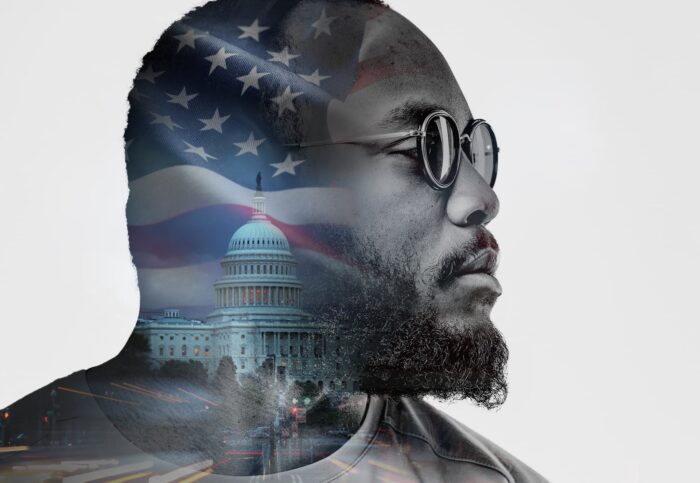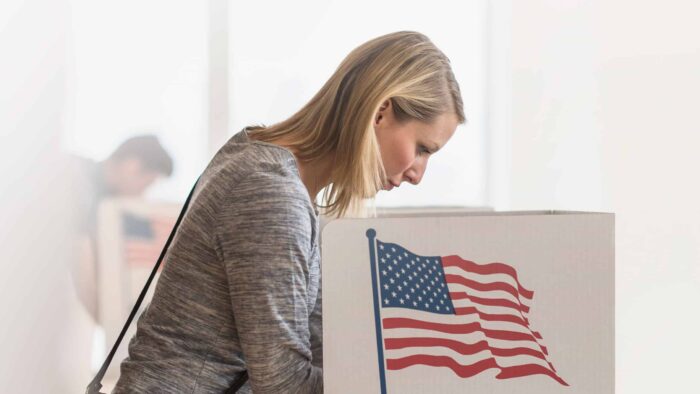The 2022 midterm election was a milestone for political advertisers. Campaign spending reached an impressive $8.9 billion – more than double the spend of the 2018 midterms.1 The growth of digital and streaming inventory for political advertising presented new opportunities for advertisers, and many seized the chance to expand their marketing efforts.
After analyzing over 8,000 political TV campaigns from 2022, Effectv was able to uncover what worked…and what needed work in order to reach optimal audiences with maximum reach.
Based on those findings, we’ve put together four recommendations and opportunities for political advertisers looking to grab viewer attention and set themselves up for a win in the 2024 election:
Opportunity #1: Making a connection with long-form TV advertising
Political advertisers are tasked with making sure their campaign is memorable so that it leads to recall at the voting booth. But driving recall isn’t just about great creative. As the TV landscape continues to evolve, research shows that different environments can create different connections between a voter and candidate.
A recent study found that an ad outcome is most effectively achieved through premium long-form TV advertising—both traditional and streaming—on the big screen. TV ads that were viewed in this environment had 2.2x greater unaided recall than ads shown in a short-form, small-screen digital mobile environment.2 Not only are ads that are viewed in this format considered more enjoyable, but they also tend to have higher viewability and completion rates.
Going into 2024, political advertisers need to consider the importance of the connection they make with voters and understand how the environment their ad shows up in will impact it. This will help drive the outcome they want on Election Day.
Opportunity #2: Getting the streaming balance right
Traditional TV is still a major driver for reaching voters – 81% of voter reach is driven by traditional TV3 – but it can’t be denied that TV viewership has changed. Content is increasingly fragmented across screens and there are more ways to reach consumers than ever before.
In 2022, some political advertisers did not tap into multiscreen, and in doing so, missed out on valuable households. In fact, one in three voter households reached by streaming in the last election were only reached by streaming and would not have been reached by TV.3 This makes streaming a critical addition to a multiscreen TV strategy for the 2024 election.
As more streaming platforms start to offer ad-supported options, political advertisers must learn how best to combine traditional TV and streaming to find incremental audiences and extend reach to households of likely voters. However, when it comes to political, advertisers should make sure they’re not overleveraging streaming. The key is finding the right balance. Findings from 2022 reveal that, for optimal campaign reach, political advertisers should allocate around 10-20% of their premium video investments to ad-supported streaming while keeping the remaining budget in traditional TV.4
Opportunity #3: Expanding beyond news and primetime
Many political advertisers in 2022 relied too heavily on news or primetime programming as a way to reach voters. It makes sense; people who are invested in watching the news are likely to be seen at the voting booths come election day. But running campaigns solely on news means missing potential voters. Our research shows that, in 2022, the top reaching campaigns had the majority of unique reach outside of news programming compared to the bottom reaching campaigns, with 51% of impressions being delivered on non-news networks.3
Advertisers also need to consider expanding the dayparts they are leaning into. Research that looked at the top-reaching political campaigns found that limiting political advertising to primetime windows limited the overall reach potential. In fact, those top-reaching campaigns delivered 66% of their impressions outside of primetime.3
Although news and primetime tactics may have been successful in past years, today’s data shows that people are changing what and when they watch, and political advertisers should follow this data to reach voters.
Opportunity #4: Having a consistent presence on air
When it comes to political advertising, having a consistent share of voice is a powerful tool to break through the clutter. Although many advertisers are focused on ramping up campaigns in the months and weeks leading up to the election, staying consistent with longer flights – even as budgets hold steady – results in better reach.
An analysis showed that the top-reaching political campaigns from 2022 were those that stayed on air an average of 16 days longer than the bottom-reaching campaigns in the 60 days before the election.3 There is no denying that the weeks before the election are valuable, but political advertisers should be planning for more consistent and longer flight dates if they want to come out on top in 2024.
Leverage new tactics to get ahead in 2024
The media buying season for the 2024 election is approaching quickly and the learnings from 2022 are key in helping political advertisers bolster performance in the next election cycle. On top of this, there are a range of newer capabilities yet to be fully tapped for political, such as programmatic, addressable TV, and FAST (free ad-supported channels).
Political advertisers should begin exploring and testing these capabilities now so that they are prepared to fully leverage them to more effectively target and reach key voters in 2024.
For more insights on political advertising effectiveness, download Effectv’s Ultimate Guide to Reaching Voters.
Sources:
1. AdImpact, Political spend across CTV, Broadcast, Cable, Digital, Radio, and Satellite, 2022.
1. Comcast Advertising, TV Makes Memories, 2023.
3. Comcast Aggregated Viewership Data combined with Ad Exposure Data from TV and/or Effectv Streaming campaigns in the Political category (9/6/22 – 11/7/22). Target: Frequent General Election Voters. Target based on Experian & L2. Campaigns segmented into terciles by reach percentage.
4. Comcast Aggregated Viewership Data combined with Ad Exposure Data from TV + Effectv Streaming campaigns (1H ‘22) for Political campaigns. Frequent Primary Election Voters as defined by L2.



